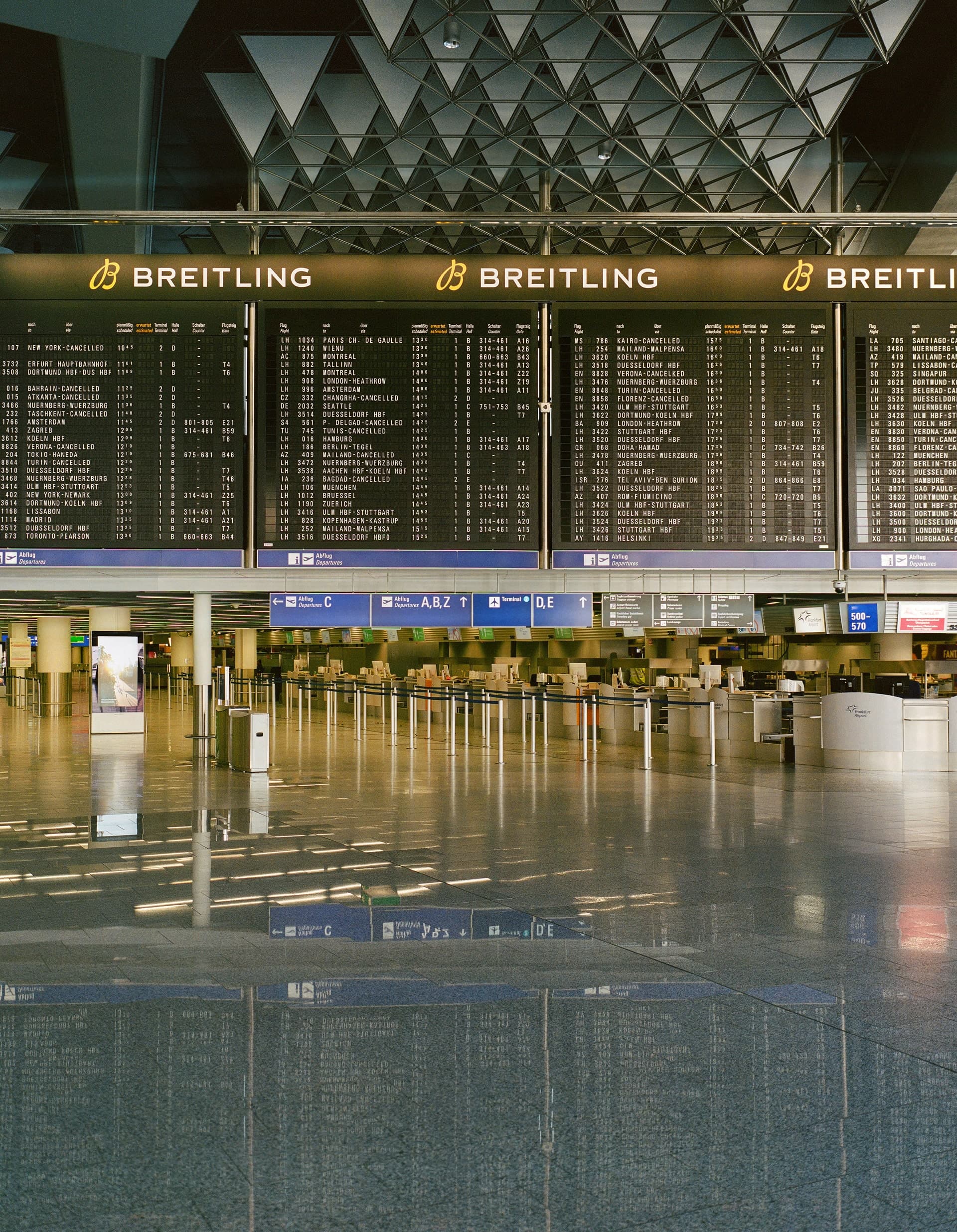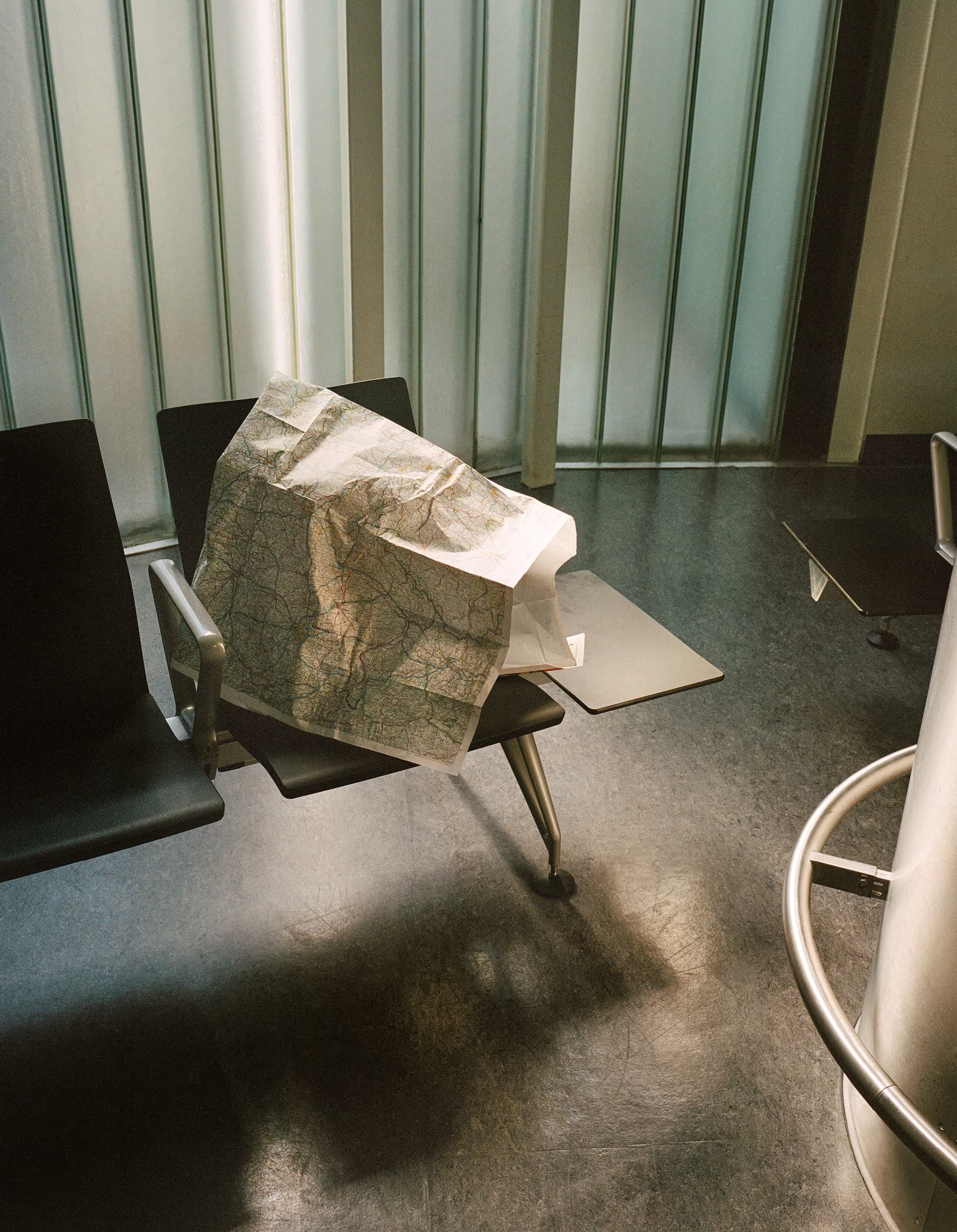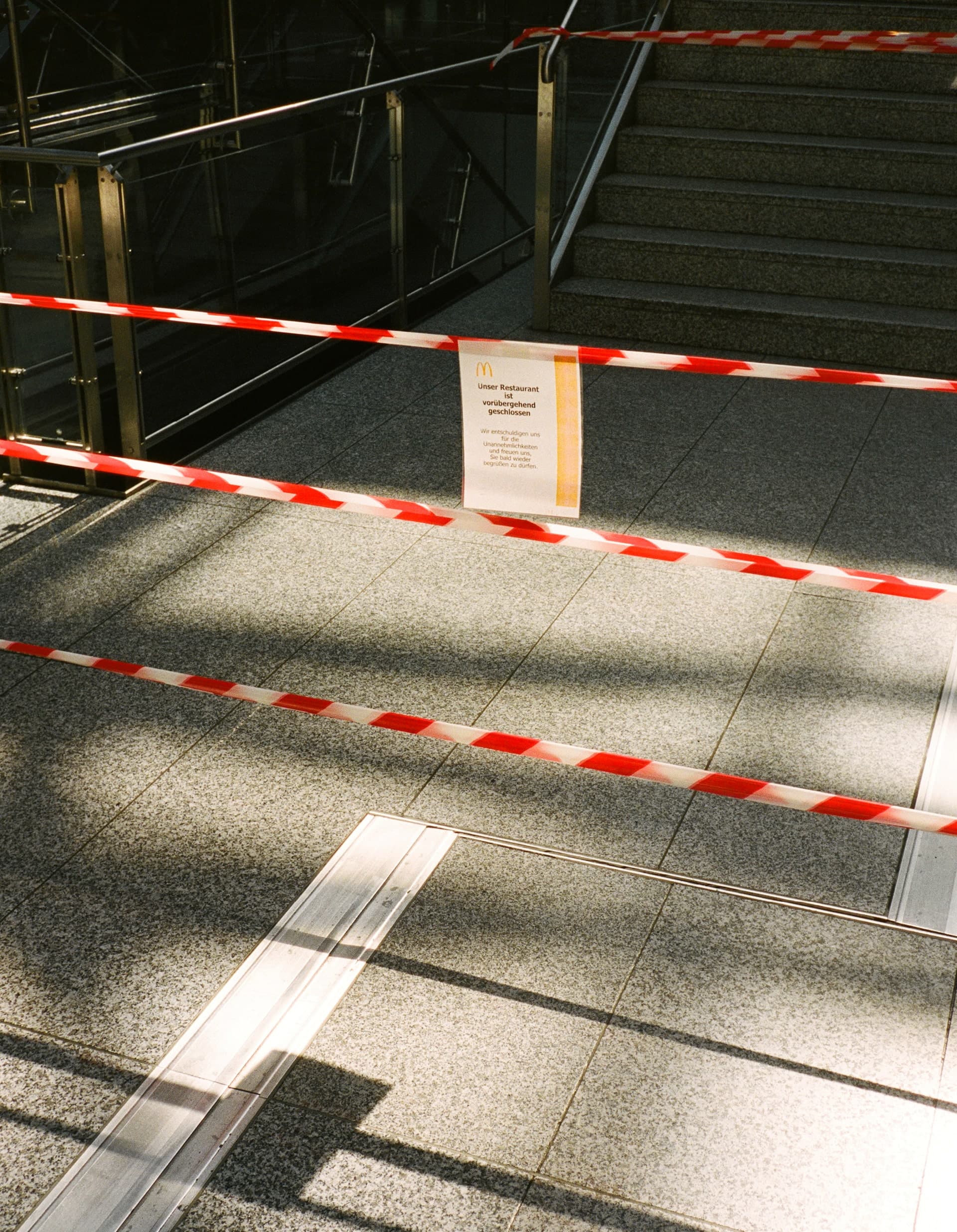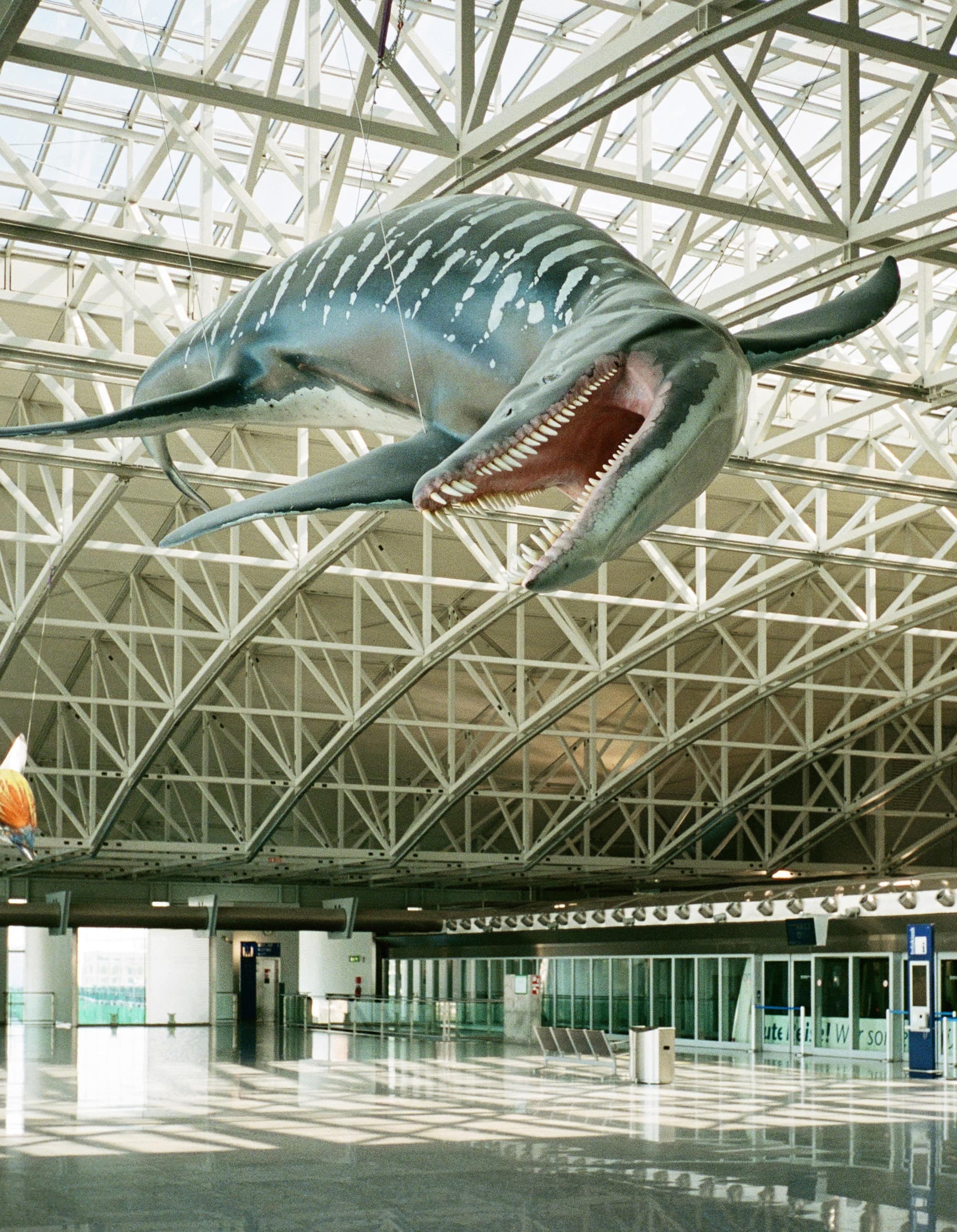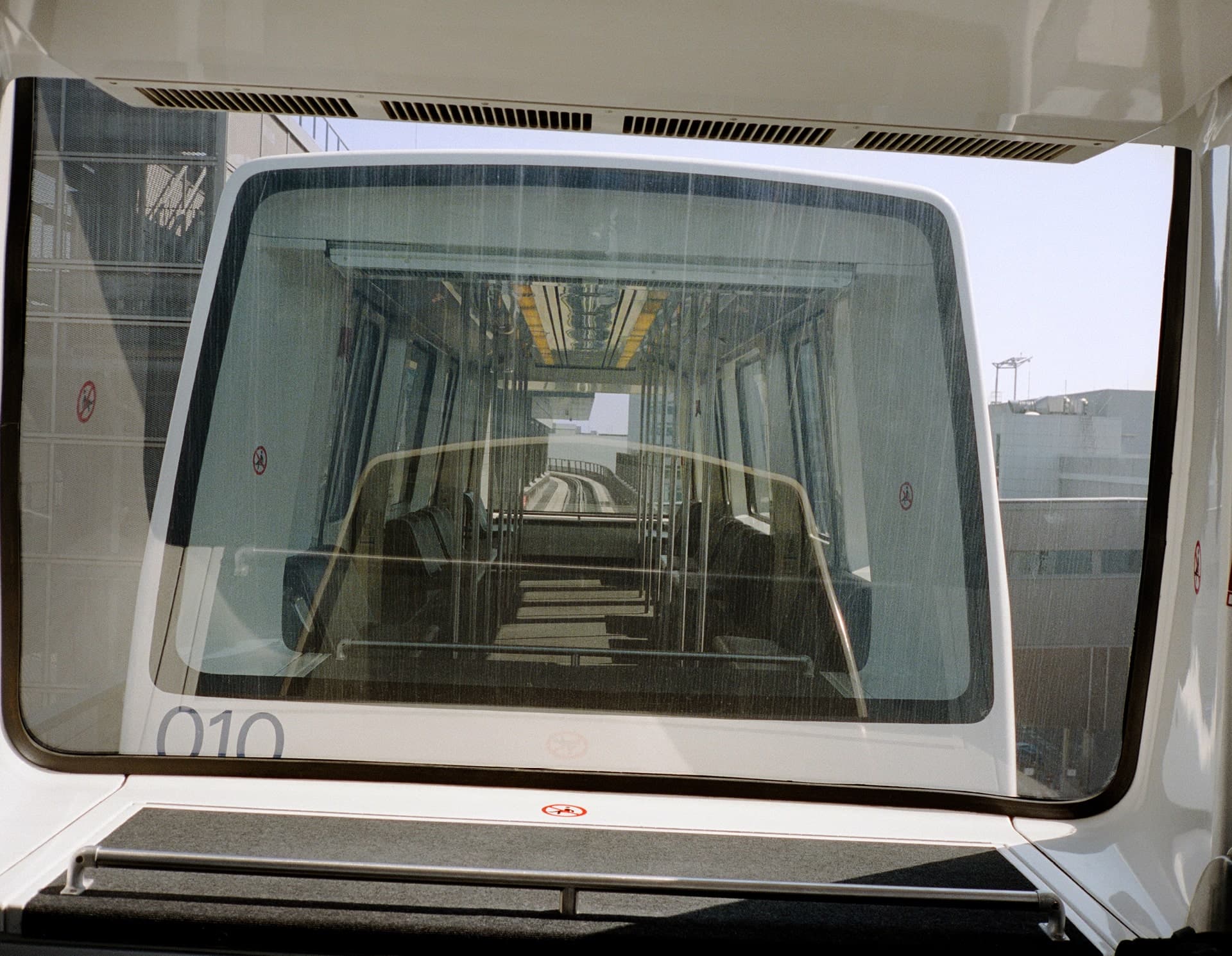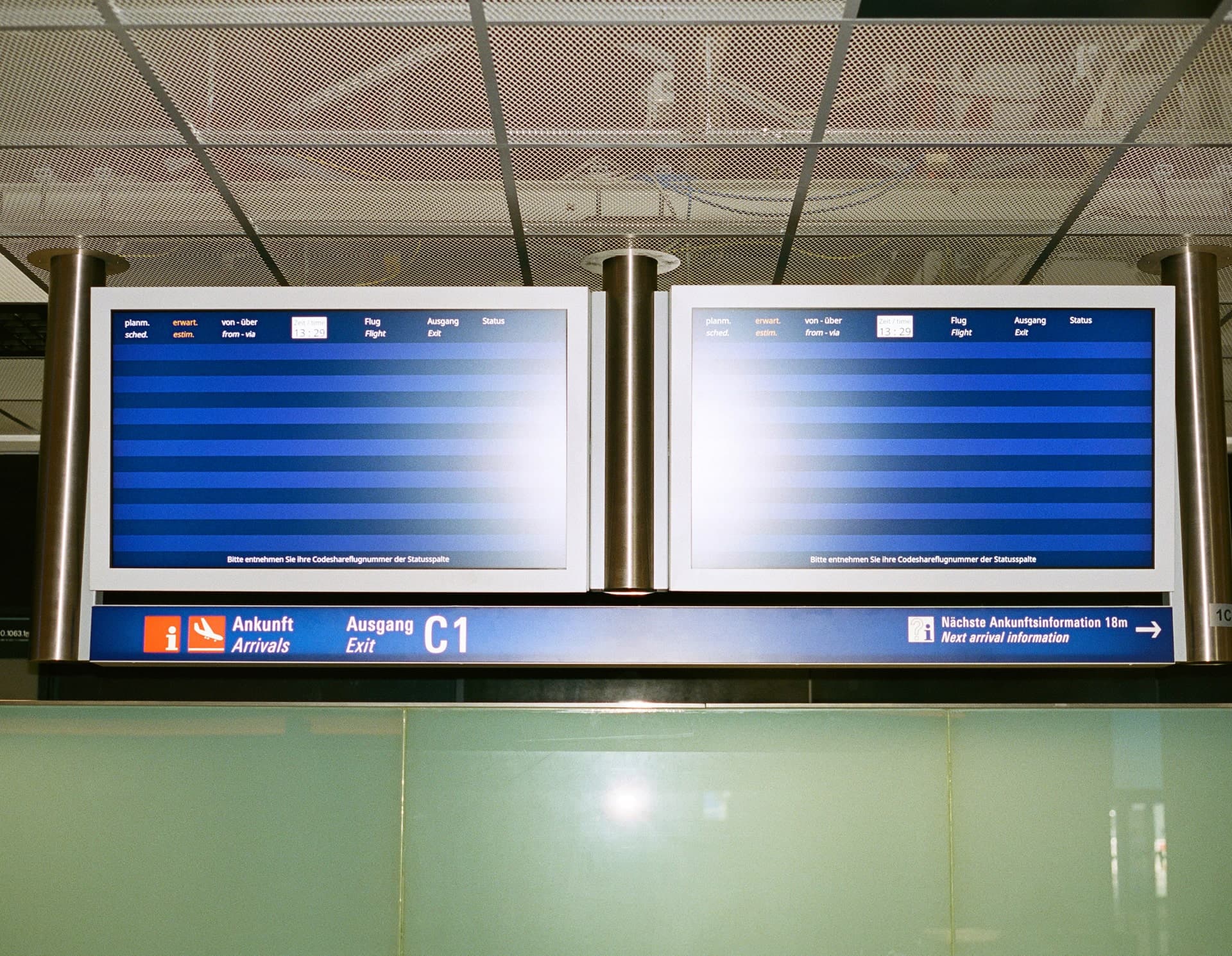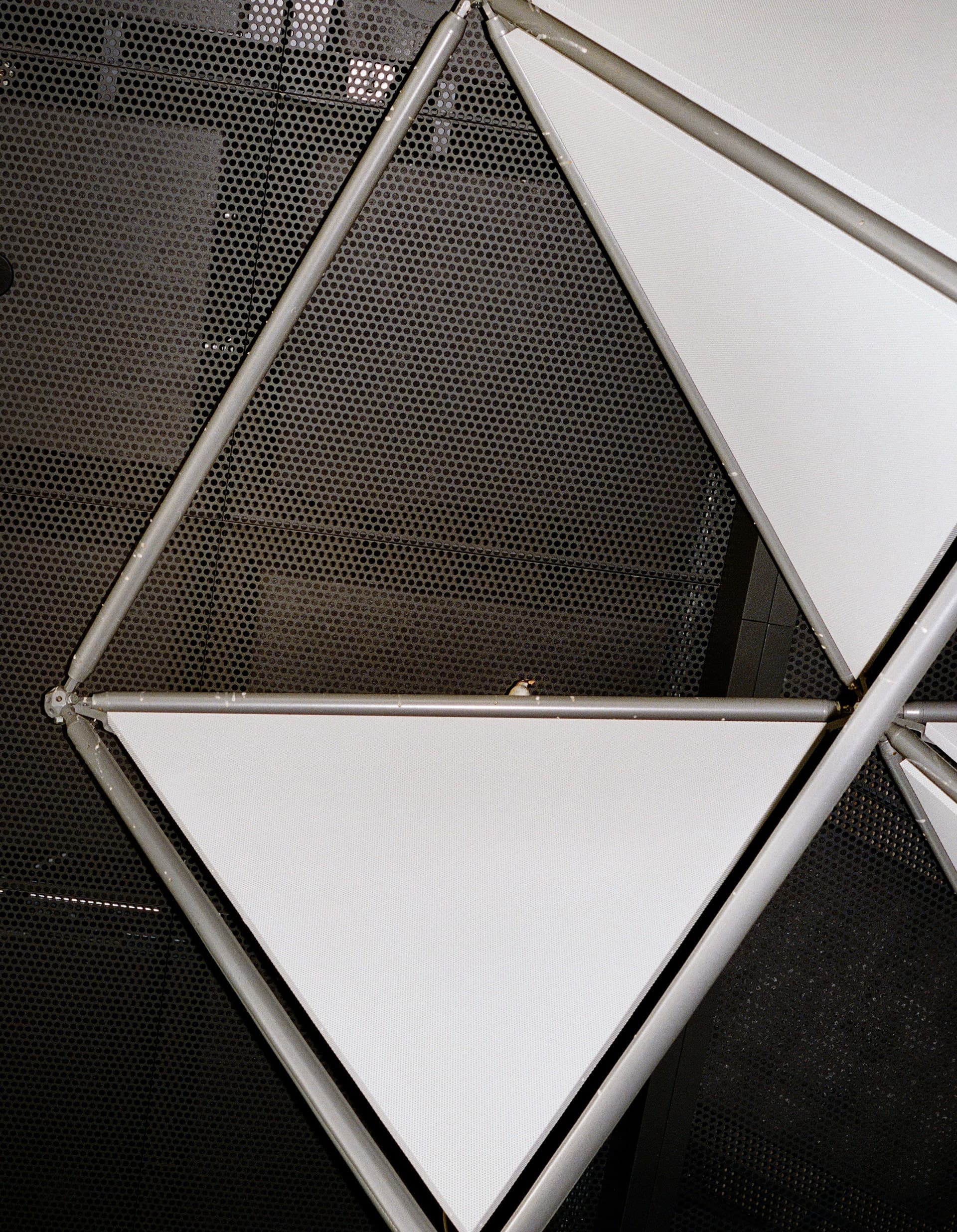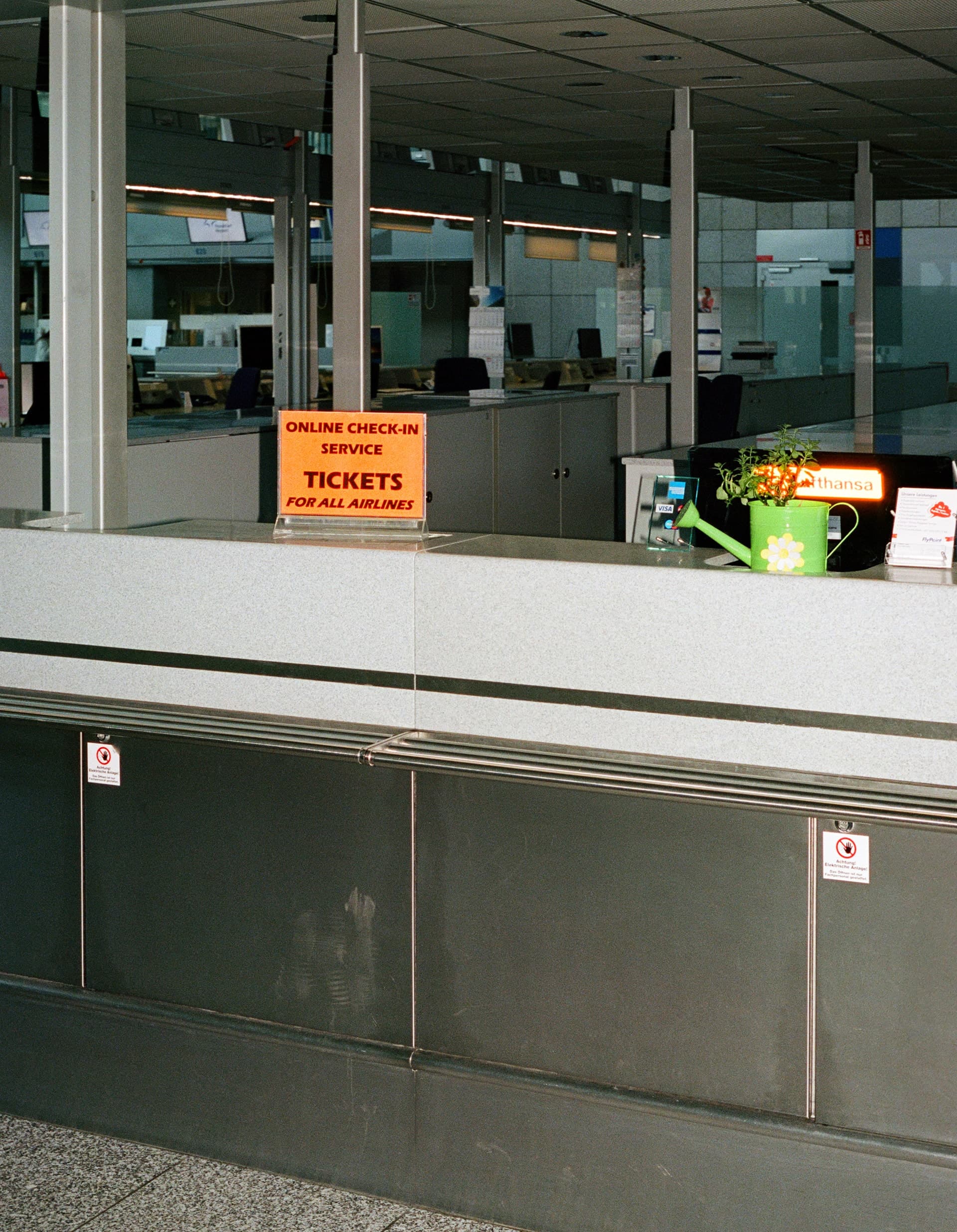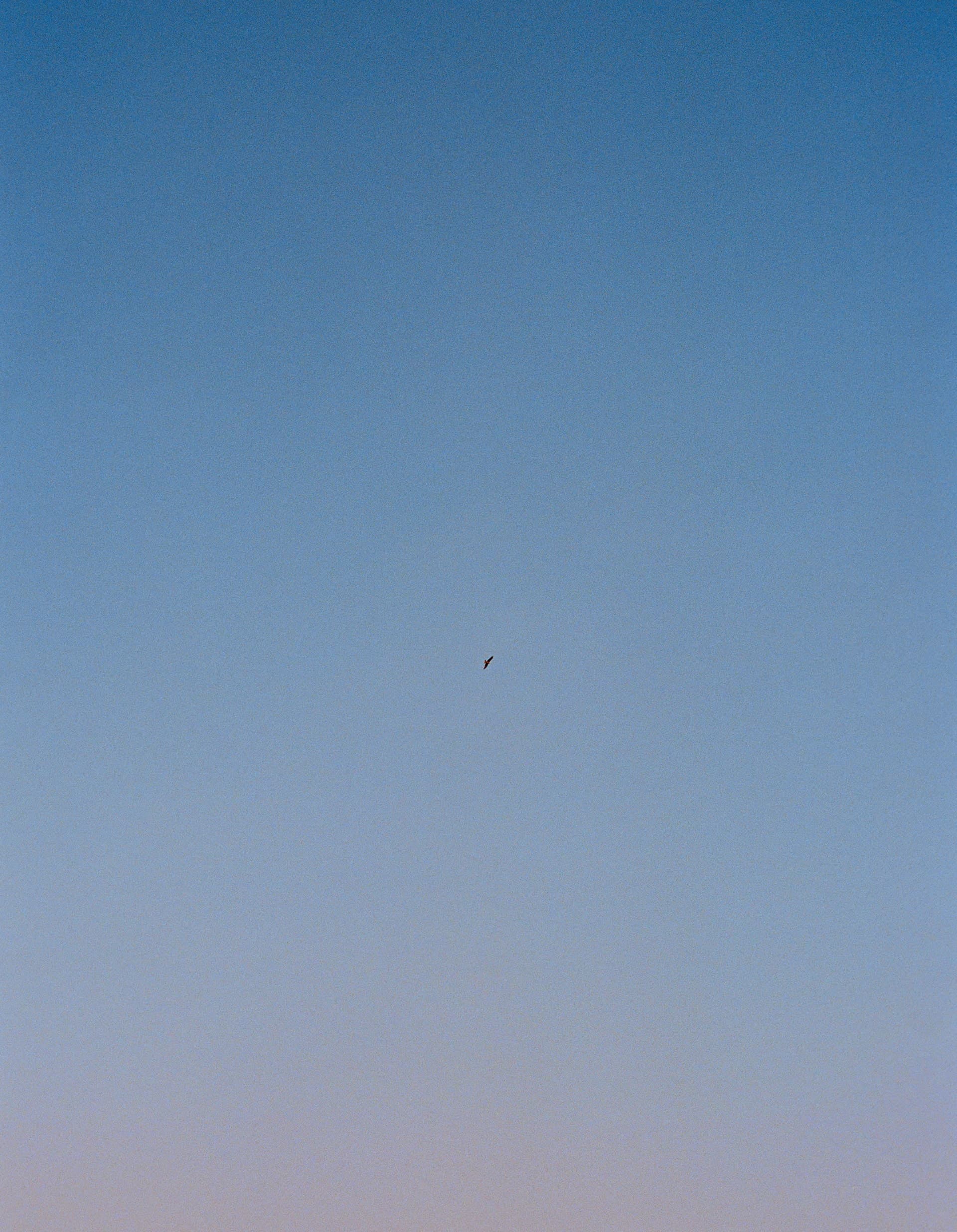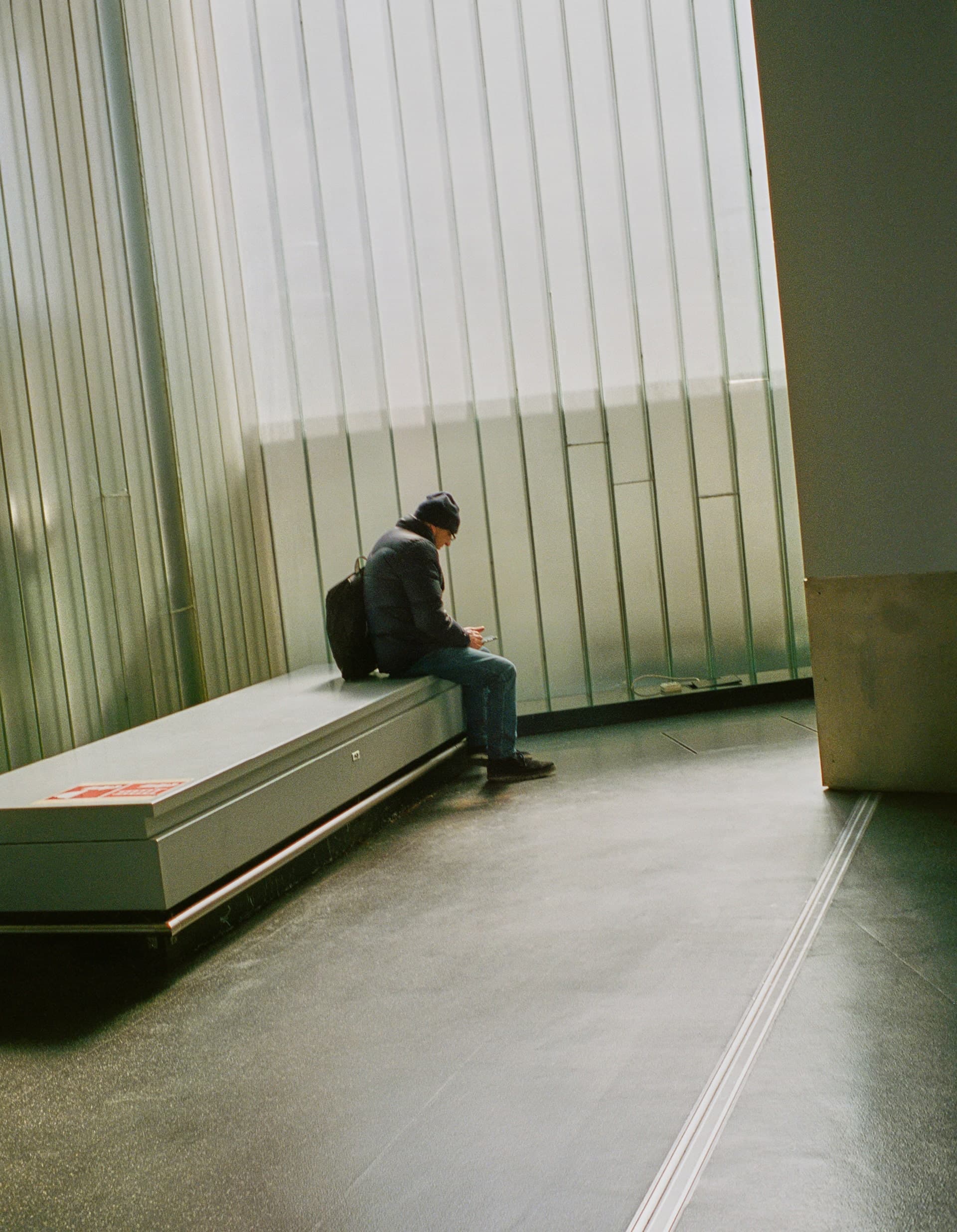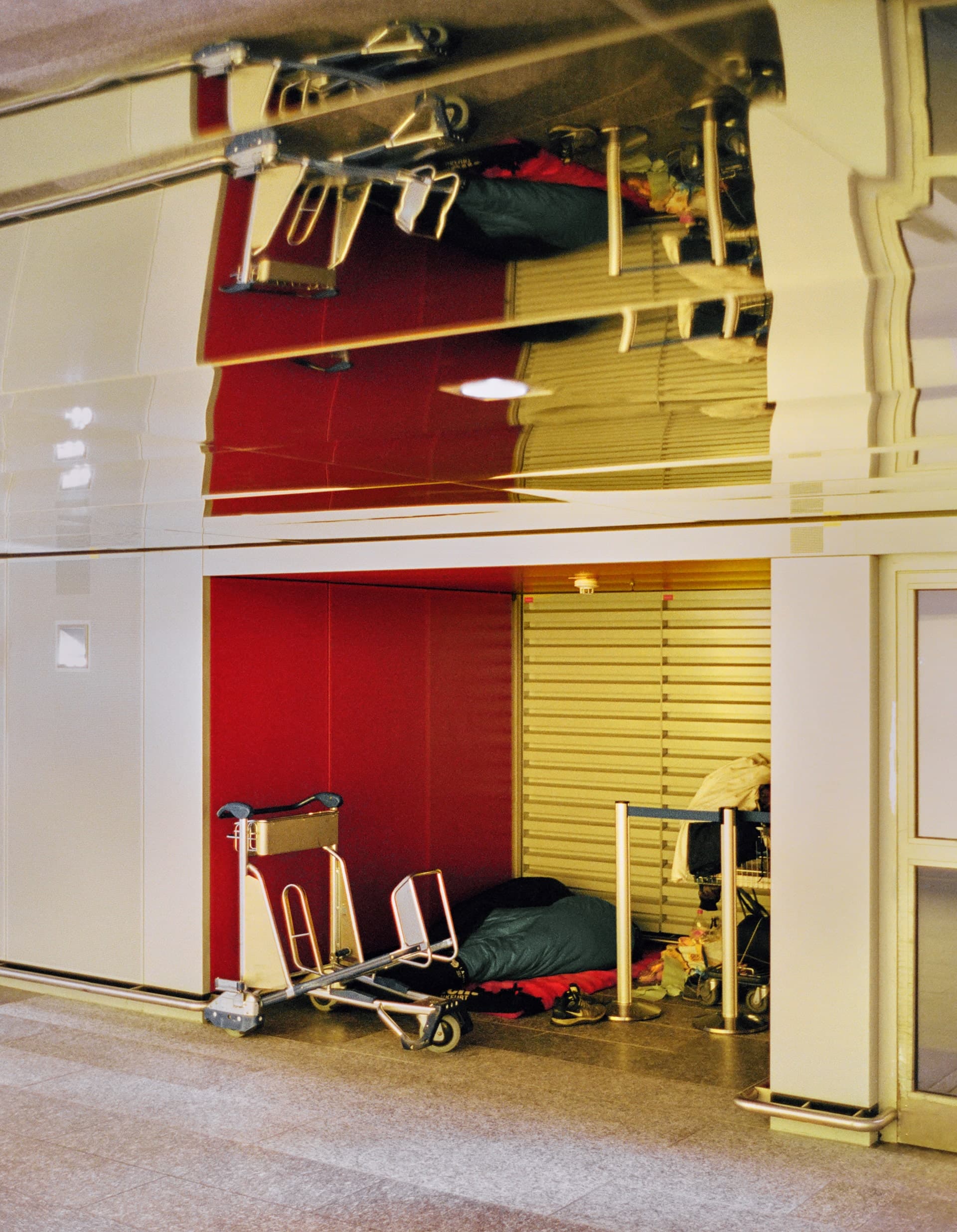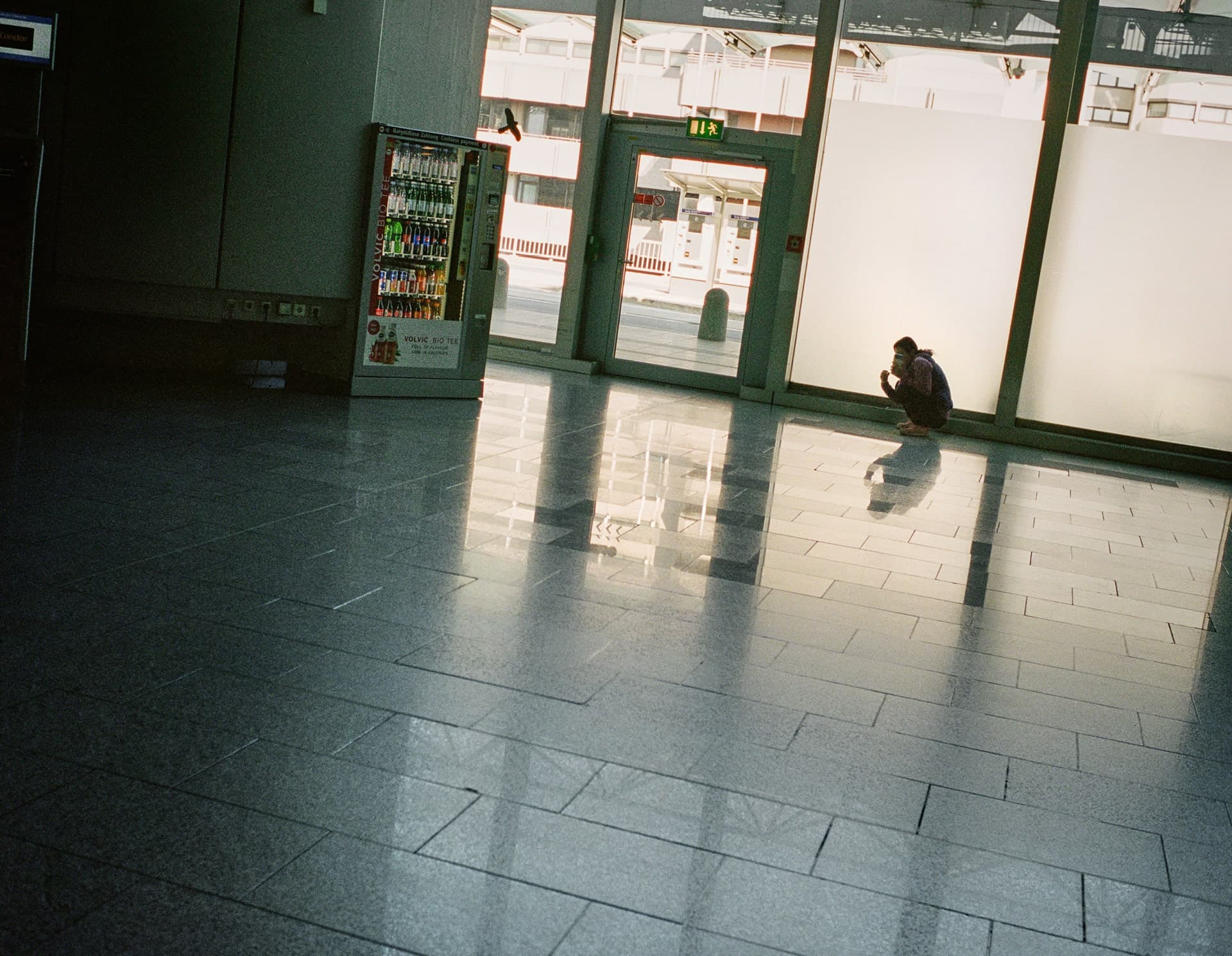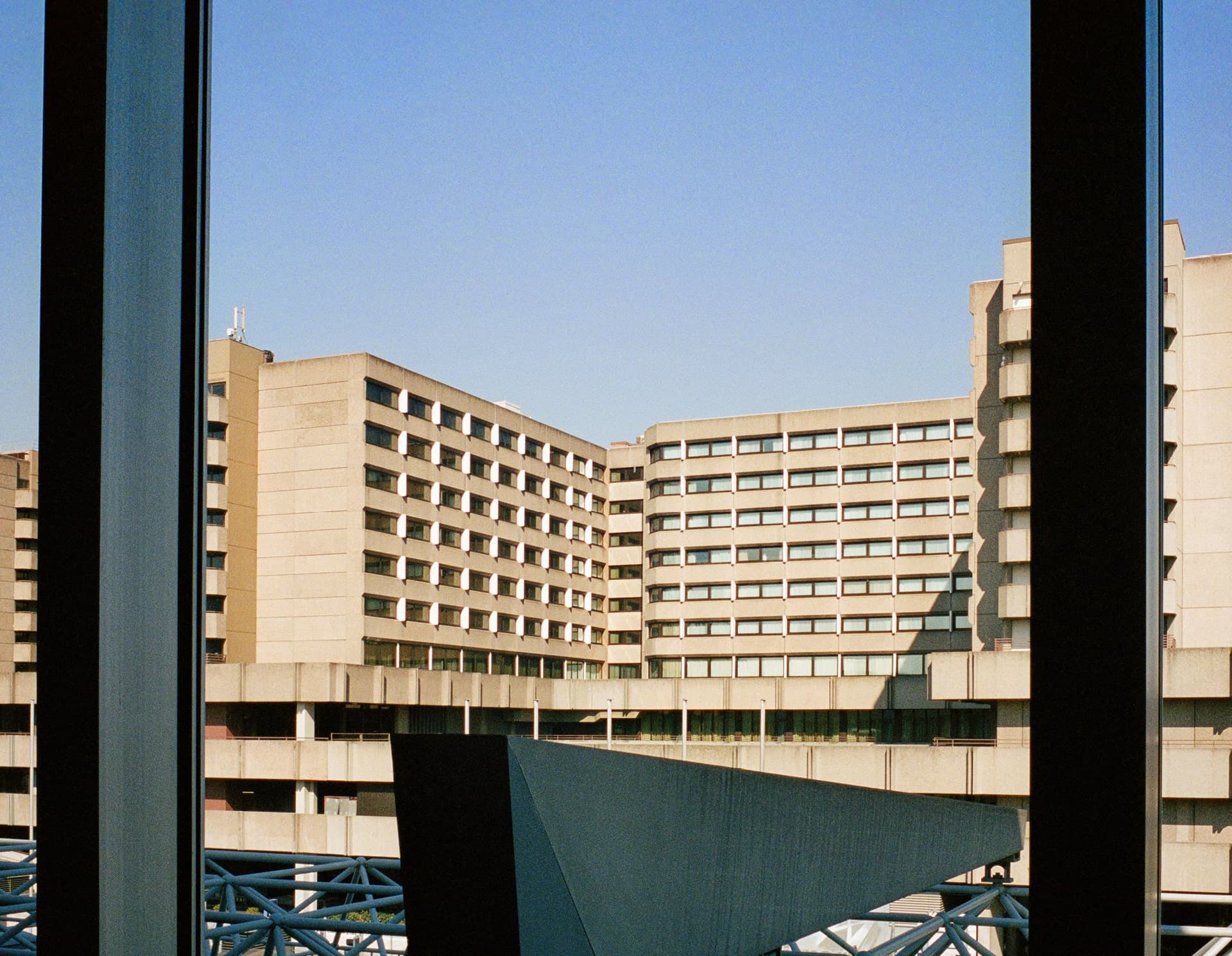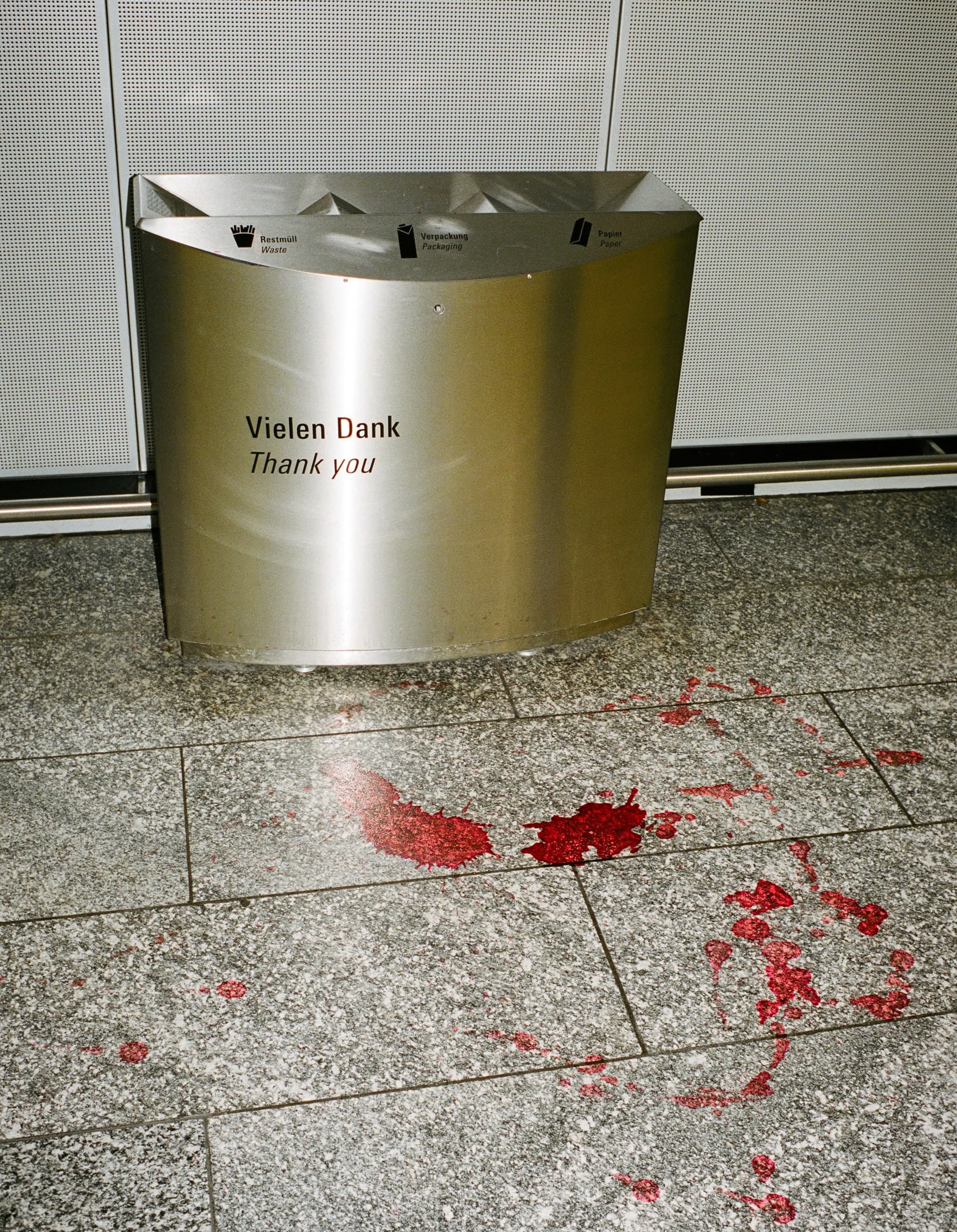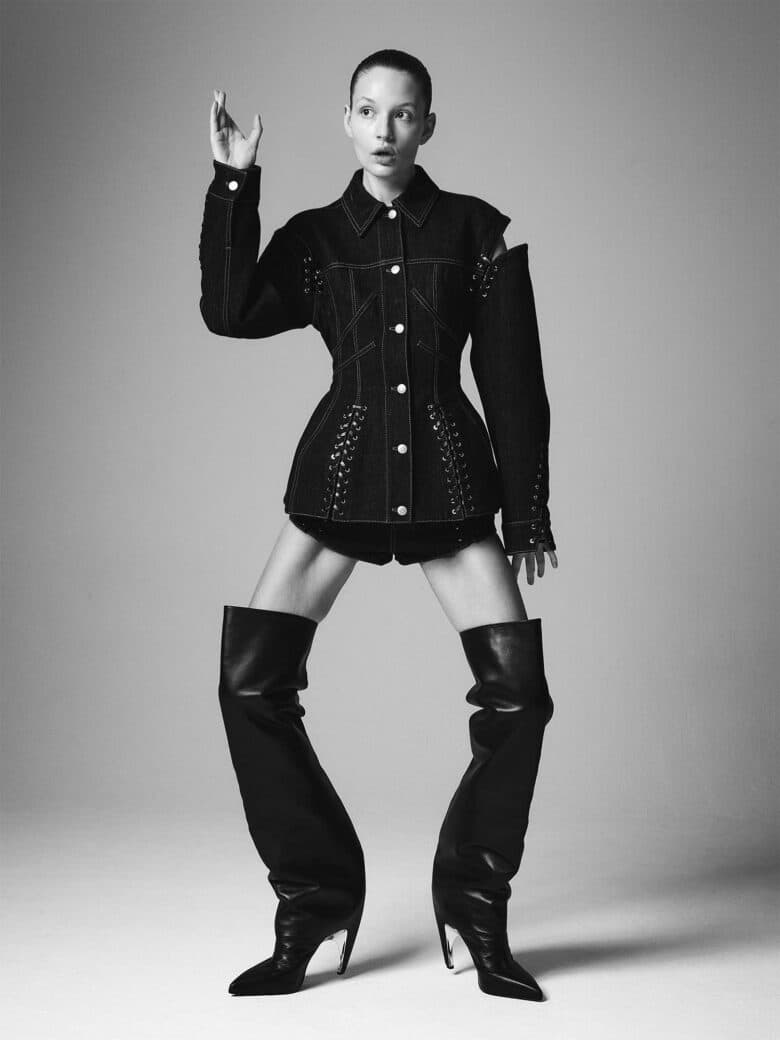Photographer Marc Krause captured the beauty of Frankfurt’s international ‘non-place’
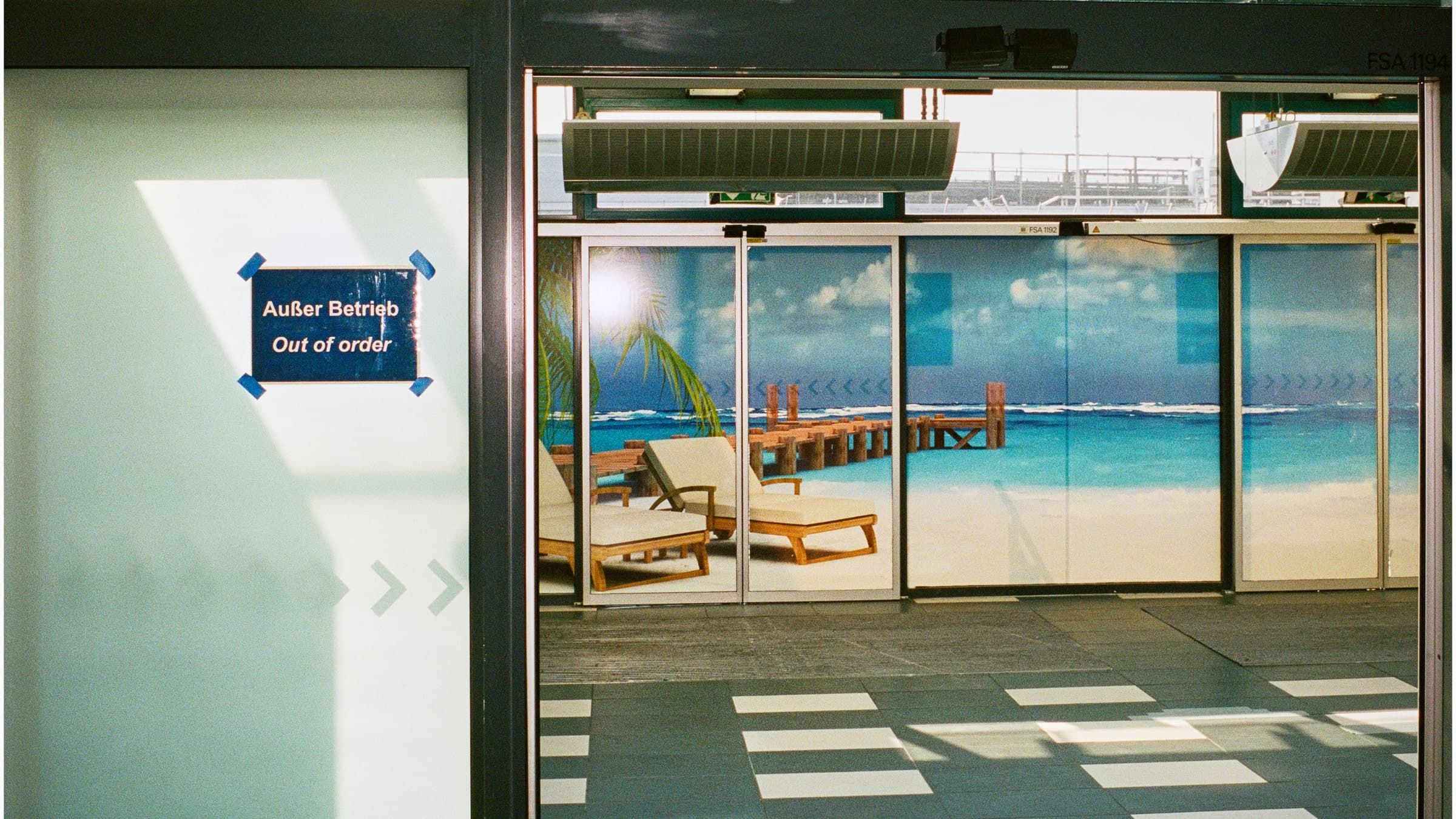
With a photo series chronicling and beautifying Frankfurt Airport across over sixty images, and crowned with a photobook published by German publisher Verlag Kettler (featuring contributions by journalist Florian Siebek), Marc Krause’s images are full of intrigue, adventure and solemnity. The photo series, which takes place in Europe’s fourth busiest airport, documents the desolate building, creating images that not only examine the overwhelming feeling of societal stasis and turmoil at the time but also the clues as to how society makes use of the so-called non-place. As its SkyLine monorail glides from terminal to terminal, its baggage conveyor belts lay still and eerie and their steel furniture, pristine and futuristic, glimmers, untouched, the deafening silence permeates all structures and surfaces, its cues and clues of radical design, temporary visitors and social suspension, relaying a narrative embedded in the past, the present and an uncertain future. Here, we sit down with Krause to discuss the photo series, his creative process and much more…
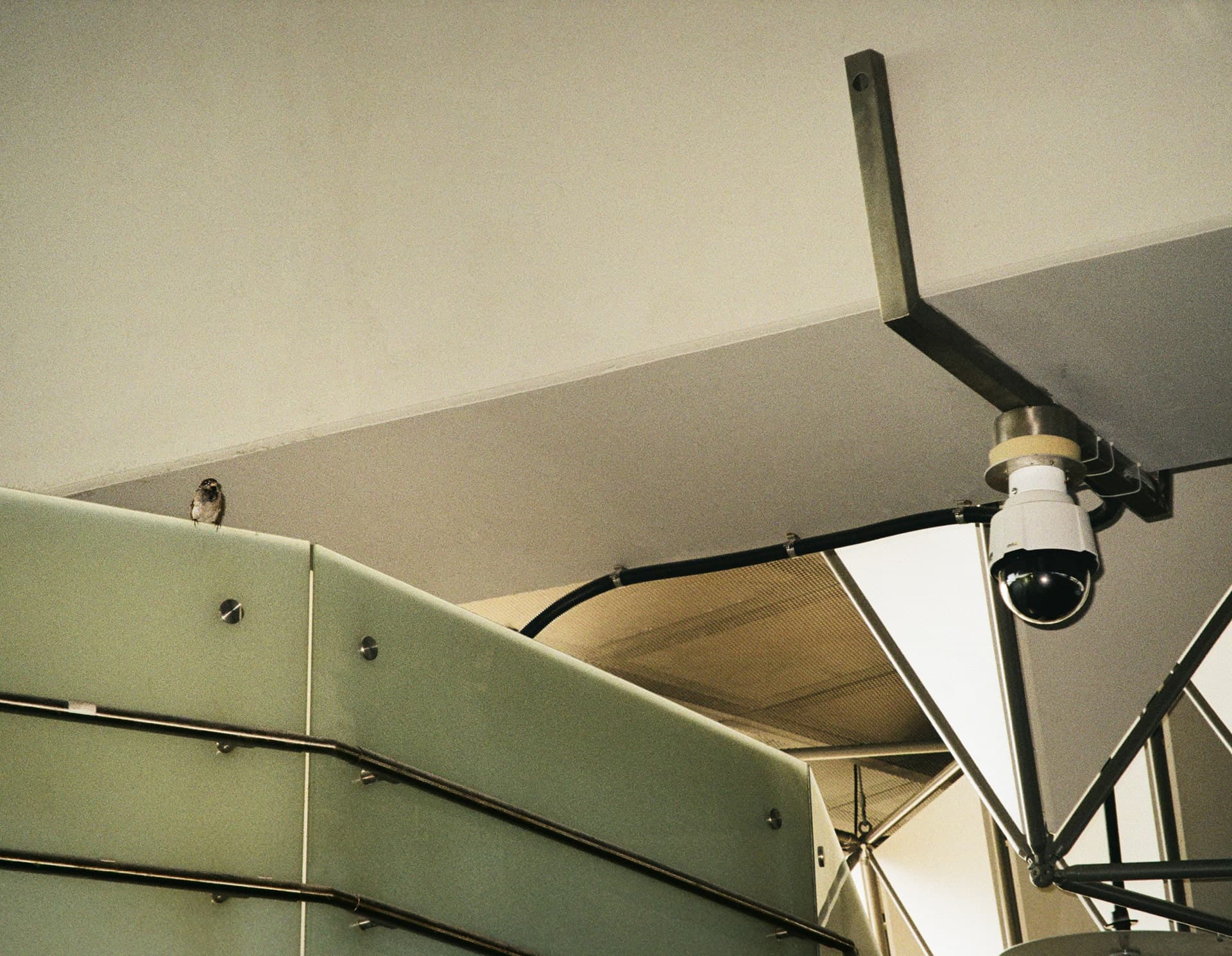
Who are you, and how would you describe your creative practice?
Krause: My name is Marc Krause and I am a fashion and portrait photographer in the broadest sense. I would say there are very different approaches to my creative practice. On the one hand, I work on a commission basis. That means when I get a request, I check with my gut feeling how well it suits me and whether I can fulfil it well, or how much it might take me out of my comfort zone and allow me to grow. Other projects arise from free concepts, which I then let grow in dialogue with collaborating stylists/creatives, until there is a suitable chance for it to come into fruition.
Can you tell me a little about the starting point for your series Airport Frankfurt?
It all started with an Instagram story post from a friend who worked at Lufthansa, showing the building completely empty. I immediately felt the urge to go there to capture this surreal unique situation. Like many creatives at the time, I felt a sense of uncertainty and pressure to somehow deal with this situation, and the airport has been a constant in my life for as long as I can remember. I grew up in the area and have known this place since my childhood, when we would fly from there to Moscow, for example, to visit family, or we would go there at night to skate through the hallways. So, I borrowed a camera (at that time I didn‘t own a Medium Format camera), packed my bags and drove there the next day.
How long did the series take you to complete?
The series itself was completed in a day of shooting. I didn‘t want to make a long-term project, and couldn‘t as my wife and I were looking after my three-year-old daughter, making sure she was coping with the situation at the time. In any case, I found it exciting to get this insight from a single day, like a fleeting window into this place and this situation. It was almost like a time-document.
What would you say was the biggest inspiration for the series?
It wasn‘t directly an inspiration, but while I was editing the pictures, one of my favourite albums was playing on repeat – Dead Cities, Red Seas & Lost Ghosts by M83.
What format did you use to make the images, and in what way did that shape the final series?
I borrowed a Mamiya 7II for the day and also had my Contax G2 with me, so Medium Format film and 35mm, both loaded with Kodak Portra film. This way of working is very important to me in terms of the process, as I do not deal with the immediate control of the image when taking photos, but concentrate on what is in front of me and around me. We grew up with analogue images everywhere around us. A certain degree of feeling of memory always resonates. No matter how modern and neutral one tries to photograph, I at least have the feeling that it always carries a piece of memory in itself.
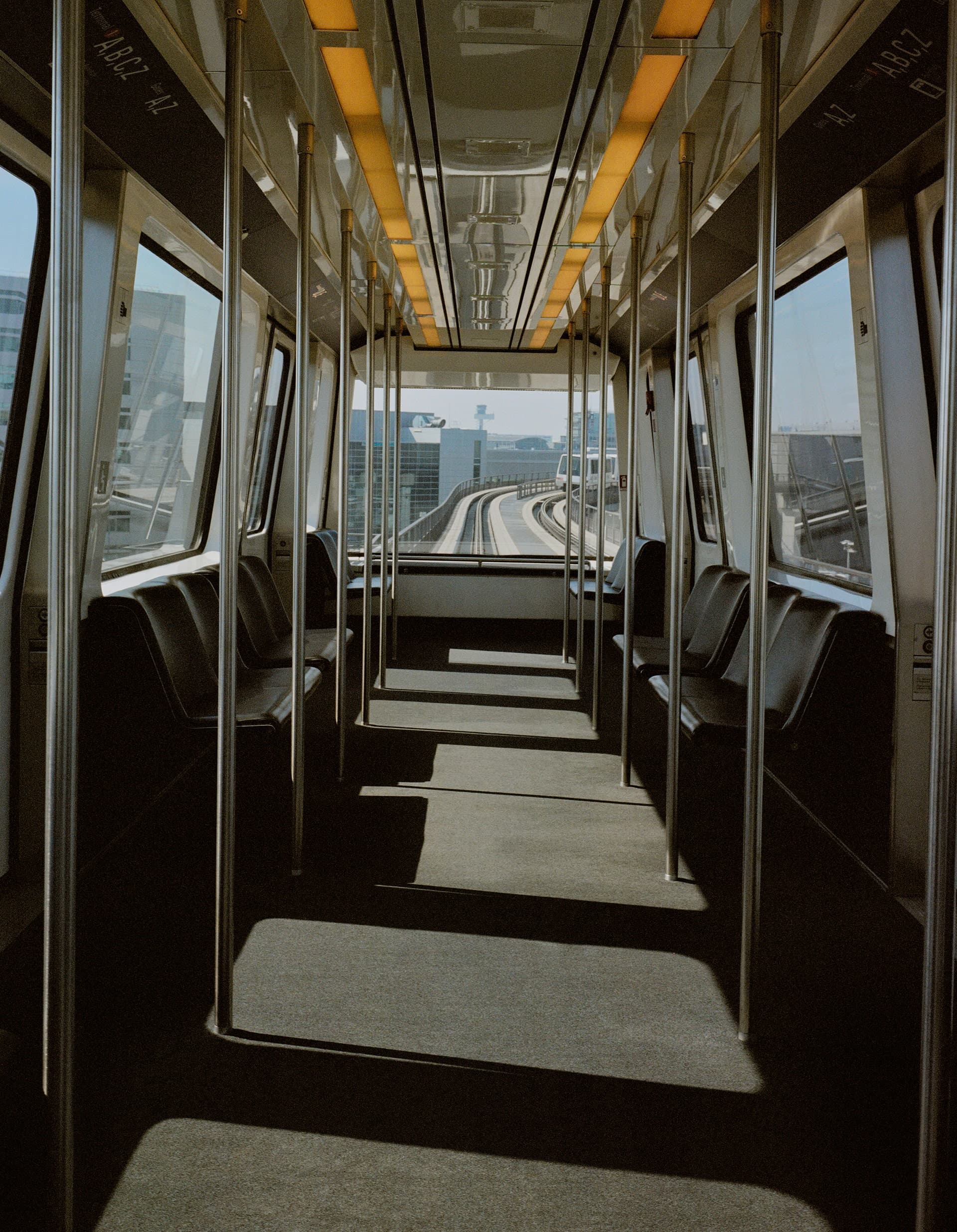
As mainly an editorial photographer, how did it feel working with a space, as opposed to subjects?
This was something that I really enjoyed and something that often plays a large role in my portrait work, too. On the contrary, I find it difficult to photograph people without having much space. I find it incredibly enriching to build a context between a person and a place. Places can be so charged with stories and energies. But even without people, I find it exciting to feel a place and try to capture it somehow very intuitively. Again, film as a medium is very important for this intuitive process.
In 2022, you exhibited some images at MZIN bookstore (MDBK Leipzig). Can you tell me a little more about this, and how that felt?
Yes, it was very exciting, and a great space. The prints I exhibited there were made a year after the images from Airport Frankfurt (I call it a spin-off series to the book). For me as an artist, it was also exciting to give a small talk about the series— a great experience, as I am usually very quiet when speaking in front of people, and included a dialogue with Philipp from MZIN, which was very nice.
As mentioned in the photobook, French anthropologist Marc Augé described airports as ‘non-places, lacking history, relation and identity’. As someone who’s spent time alone in Frankfurt Airport, do you agree?
It‘s certainly a non-place. It’s not a city, but it possesses all the characteristics of being its own one. It has a history, yet it‘s so fragmented and diverse that I would almost argue its existence is minimal. Its identity is in constant flux, much like a PVC floor. The character fades away. It should be smooth and unexciting. Purely functional and non-disruptive. Yet, it aims to provide comfort, jobs, and security for everyone. For those who are engaged with it, it forms part of their narrative. There is history or rather multiple parallel realities co-existing.
What was the strangest thing that you witnessed during your time at the airport?
Right at the beginning, I came out of the garage and saw blood on the floor, several hundred meters
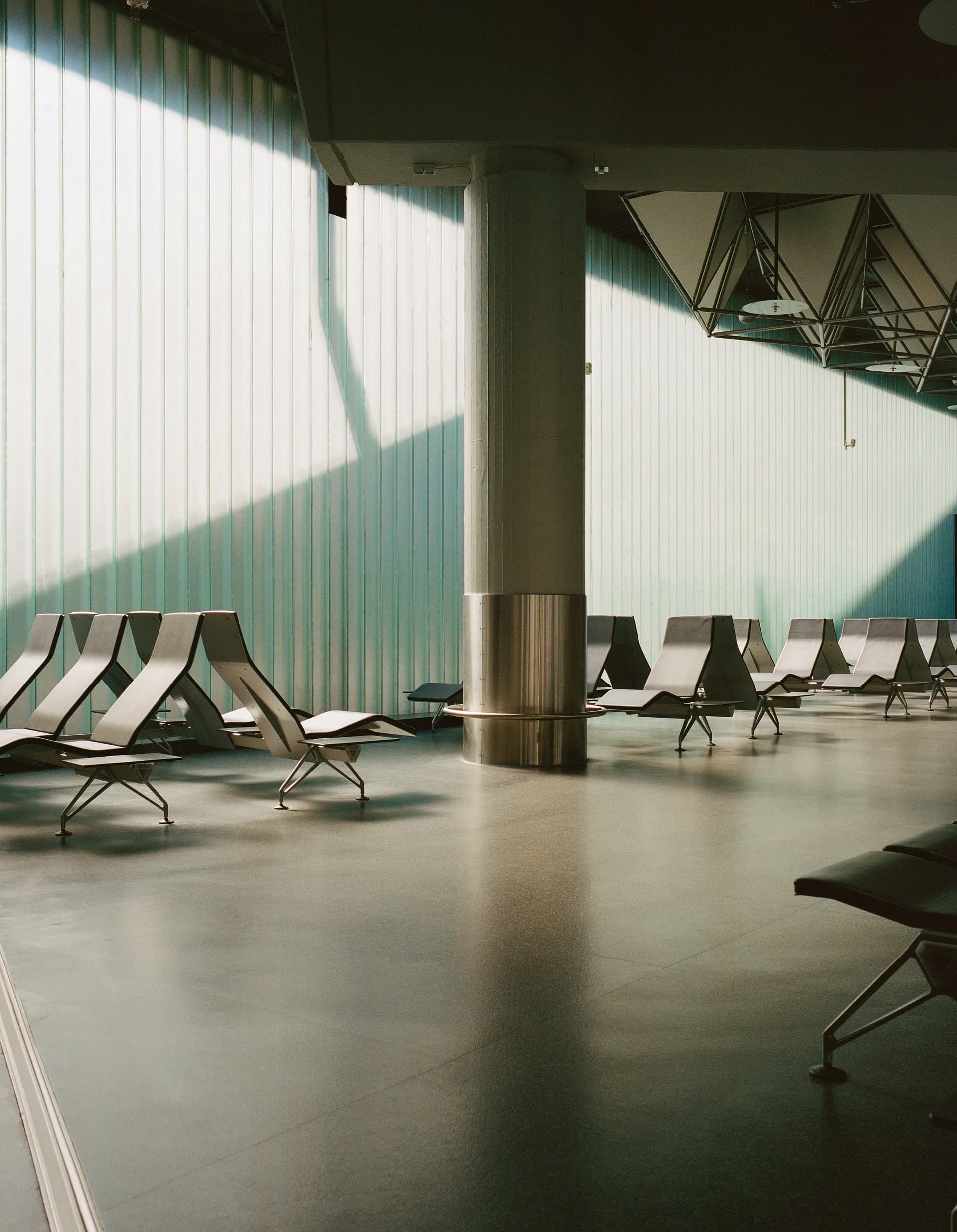
Looking back, what image from the series do you feel sums up Airport Frankfurt?
It’s hard to decide on just one; the two that stand out in my mind are the one with the Zoom advertising banners, as at that time, not many people knew Zoom. The other is a picture (that I printed really large for the book launch at MZIN) showing several levels, a sliding glass door with the sign reading “Out of order”, and behind it another sliding glass door with a beach landscape. It’s surreal yet, has a sense of longing.
What are three destinations that you’ve always wanted to fly to?
The irony perhaps is that I’ve had a severe fear of flying from my teenage years onward. Right now, I‘m really missing New York because I just bought Quentin De Briey‘s absolutely great book Thank You For Your Business. I definitely want to go to the Azores because I‘ve wanted to see whales since I was little. Finally, I definitely want to take a trip to the Seattle/Vancouver area, mainly to see the Olympic National Park and visit Orca Island, but also to experience where they filmed Twin Peaks. There is also this fun thing called astrogeography, where you can check your birth data through astrology, and find out where potentially influential places in the world could be for you, and exactly there a lot of lines flow through for me. I want to see what I find there 🙂
What‘s next for you and your work?
Good question. I want to continue working on linking contexts. Now that the book has been published, I also want to deal more intensively with shooting places again. I have a new book idea, but there are still some obstacles in my way that I don‘t know if I can influence whether I can overcome or remove them. Making a book is expensive; I just need to find new pots of gold and be open to new collaborations. Still, during the pandemic, there were often times when I thought about what else I could do to provide for my family and myself, and there’s nothing else that I would enjoy and still frustrate me less than photography, so I have no other choice and I love what I do.

